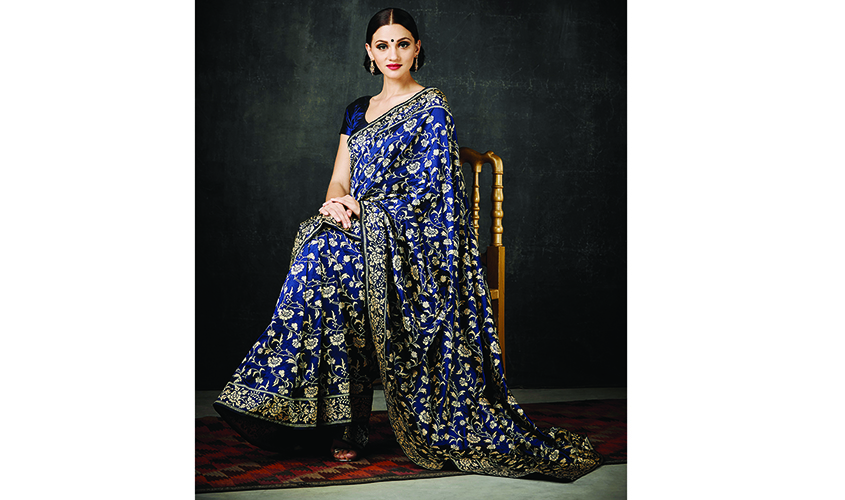The Parsi community has a rich tradition that goes back many centuries. Parsi heritage has always been opulent and unique in its own way, including fashion and clothing — a department many Parsis excelled in. Parsi women have always adorned sarees in their own style. The traditional Parsi saree made of embroidered fabric is called Gara. And the famous Parsi hat is called a Pheta, only worn by men.
Last month, Parsi heritage and Banaras craftsmanship came together for the first time as founder of the label Ekaya, Bharat Shah, presented the new narrative for the season from his treasured heritage textile label, founded four years ago, in 2012. Brand Ekaya celebrated the fusion of rich Parsi heritage and Banarasi craftsmanship in a contemporary setting at the Bikaner house, hosted by Bharat Shah and his daughter Palak Shah with designer Ashdeen Lilaowalia.
The idea was to reinterpret traditions to create a new global aesthetic which is beyond cultural boundaries without compromising on authenticity. Titled as Ziba, this collection is inspired by the Parsi gara tradition and comprises a collection of sarees, dupattas and lehengas.
The event showcased traditional Parsi sarees and lehengas made through Banarasi weaving. The Ekaya step-well pattern that mirrors the ghats of Banaras was the central object of installations at the event. The main segment displayed lehengas, hung through rods over slightly raised platforms which was the centre of attraction as diya lights (inspired from the ghats of Banaras) made the evening a perfect reflection of the traditional and cultural aesthetics of Banaras.
Palak Shah took time to speak more about the show. She said, “We have been working on the collection for almost a year now. Our strength lies in Parsi designs and in weaving and we thought of amalgamating it with Banaras craftsmanship. When it comes to designs, the Parsi gara really has unique motifs and patterns but we focused more on those which looked best in weaving. Because many times, when you copy one design from one place to another, it may look forced upon. We have used motifs like chakli chakla, crane motifs, peacocks and exotic birds of paradise, which entwine themselves with chrysanthemums, peonies and Chinese roses that fit well with the fabric.”
Shah also spoke of why Parsi designs are only limited to a certain segment of the society. “I think a certain section of people would only truly know what Parsi gara is all about and what a beautiful piece of embroidery it is. It is not very commercial, I must say. People hardly know what kind of craftsmanship goes through in such designs. I think people in India know what Parsi gara is but I don’t think they truly appreciate it as a product. I hope people would start developing interest in this. That is the aim of our collection.” she says.
In creating these design, attention was given to minute details like understanding various processes and techniques to bring visual dynamism into the outfit of the woven textile. Different kinds of stitches, including satin technique, was used. Designer Ashdeen Lilaowalia, with his expertise in Parsi gara embroidery, has been able to sensitively evoke the traditional Parsi aesthetic of garas and kors (borders) in this woven
collection.
Saturated rich jewel tones of rubies, emeralds and sapphires in the warp gave a dramatic contrast to the cream weft threads. To create opulence, silver zari, integral to Benarasi weaving helped in adorning the sarees.
Parsi gara is a well established form of embroidery and transforming this look of gara into woven handloom textiles without compromising on the authenticity presented a huge challenge for the designer. Lilaowalia said, “I have specialised in Parsi embroidery as a designer and have my own label in it. So, I thought it would be an ideal way to create a kind of collection with Banaras weavers. The unique point is that Parsi embroidery is an amalgamation of Chinese, Persian, Indian and European motifs. It is a very artistic school of design and all the motifs are very realistic. Also, Banarasi craftsmen have a new kind of repertoire of designs. So, it is also an opportunity for them to create a new kind of design.”
As the evening ended showcasing the repertoire of exclusive Parsi gara designs, delicious Parsi cuisine was served to the guests to celebrate the collaboration.

